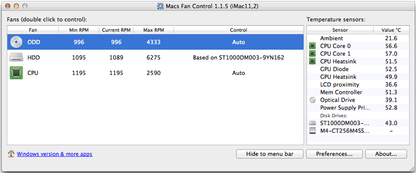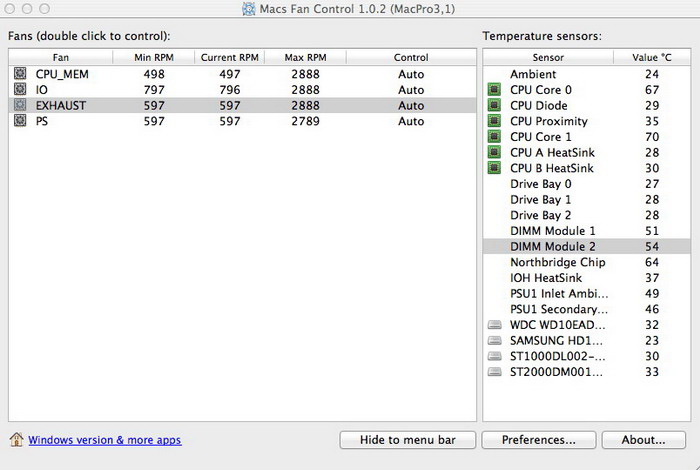

- Macs fan control hackintosh install#
- Macs fan control hackintosh mod#
- Macs fan control hackintosh full#
This past year, I decided to finally do it because: a) my old computer was dying a slow pinwheel of death, and b) I didn't have the budget for a real Mac Pro. If you're interested in doing the same, I've compiled a step-by-step beginner's guide (including a detailed list of components) based on my experience to help you get started your first machine.īuilding a Hackintosh (or CustoMac, depending on your vernacular) had been on my mind ever since Ryan Koo posted the original No Film School Hack tutorial a few years back. Putting together my first Hackintosh was a lot of work, a lot of fun, and saved me a heck of a lot of money.
Macs fan control hackintosh install#
Why not build your own upgrade? It worked for me.Īs a relative novice to the world of computer builds, practically all I'd done prior to this was install RAM. If you’re like me, the data rate of your footage may be multiplying faster than your current computer can handle.

This is a much more reasonable speed.Don't buy your next computer, build one with the performance of a Mac Pro-for half the price! These will reduce the 12V output of the motherboard header to about 5-6V or 3-4V depending on the adapter. There are two adapters that came with the fan and one is 150 ohm, the other is 50 ohm. These are simply just a 3 pin extension with a resistor inline on the power wire.
Macs fan control hackintosh full#
That being said, these fans run really fast at a full 12V and even down to 5-6V and are very loud. This means that if you make a connector that is exactly the same as a 3 pin fan (a normal 3 pin to 4 pin molex adapter) and connect it to the PSU molex connector (these fans draw a lot of current so don't power it from the motherboard) and run two more wires to the tach and voltage wire from the motherboard to the tach and control pins of the fan, you would have control. I supplied 12V to pin 2 and slowly increased the voltage to pin 4 up to 12V without frying the fan at all. Pin 1 is ground, pin 2 is 12V power, pin 3 is the Tach sens., and pin 4 is the control pin. Where the top spikes are the key tabs on the connector. This is wrong as the pinout looking at it from the end of the connector looks like this:
Macs fan control hackintosh mod#
So, first of all, I don't know how Shanky fried his Apple fan (posted in the Hack Pro Mod thread) unless he put 12V to both outer pins of the connector. I got the new fan because I needed one anyways, but now I have some things to play with. According to the specs on these fans, they are good for 130 CFM at their full speed of 3300 RPM and 44 dB. The main power and ground pins of the fan would be fed power from the PSU and not the motherboard as 0.75A/9W is too much for it. I would use the rheostat to reduce the maximum 12V down to 5V before connecting it to the fan though as 12V will fry the fan (Shanky I think already did this). My idea is to put a rheostat inline on the 12v pin of a motherboard header and plug the other end of the wire into the 4th pin of the fan. I'm trying to figure out a way to reduce the voltage from a standard motherboard header to 0-5V instead of 0-12V so that our motherboards can still control them. The fans that Apple used were made specifically for Apple and nothing else, so this doesn't surprise me. These sensors are the ones mounted behind the HDDs next to the SATA connectors. From what I read about the Mac Pro motherboard, the 4th pin (should be PWM) is an analog 0-5V signal from the temperature sensors used for HDD and something else. The problem is the fans, not the motherboard.


 0 kommentar(er)
0 kommentar(er)
